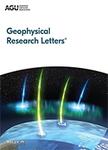版权所有:内蒙古大学图书馆 技术提供:维普资讯• 智图
内蒙古自治区呼和浩特市赛罕区大学西街235号 邮编: 010021

作者机构:Nanyang Technol Univ Sch Phys & Math Sci Div Math Sci Singapore Singapore Nanyang Technol Univ Earth Observ Singapore Singapore Singapore Australian Natl Univ Res Sch Earth Sci Canberra ACT Australia Univ Colorado Cooperat Inst Res Environm Sci Boulder CO 80309 USA Univ Colorado Dept Geol Sci Boulder CO 80309 USA Nanyang Technol Univ Asian Sch Environm Singapore Singapore
出 版 物:《GEOPHYSICAL RESEARCH LETTERS》 (地球物理学研究快报)
年 卷 期:2022年第49卷第15期
页 面:e2022GL100233-e2022GL100233页
核心收录:
学科分类:07[理学] 0708[理学-地球物理学]
基 金:National Research Foundation Singapore Singapore Ministry of Education under the Research Centers of Excellence Initiative [04MNS001913A620, 04MNS001953A620] MOE AcRF [MOE2019-T2-2-112, RG118/19S] Australian Research Council Discovery Early Career Researcher Award [DE220100907] Australian Research Council [DE220100907] Funding Source: Australian Research Council
主 题:azimuthal anisotropy seismic tomography southern California crustal deformation block rotation
摘 要:We present a high-resolution P-wave azimuthally anisotropic velocity model for the upper and middle crust beneath southern California by a novel adjoint-state traveltime tomography technique. Our model reveals significant anisotropy variations between tectonic blocks that clearly reflect both past and current plate boundary deformation. In the shallow crust, seismic anisotropy is mostly controlled by the preferred alignment of microcracks related to the present N-S compressive stress;while at deeper depths (similar to 6 km), seismic anisotropy mainly records paleofabrics formed during the long-lived Farallon subduction and later extension that have not been fully reset by the present transform motion. Interestingly, our model demonstrates distinct fast axes beneath the western Transverse Ranges from its neighboring blocks, probably reflecting the large-scale vertical axis clockwise rotation of the block. In addition, we identify layered structures with distinct anisotropy features beneath the Salton Trough, which could be a result of the current transtension.